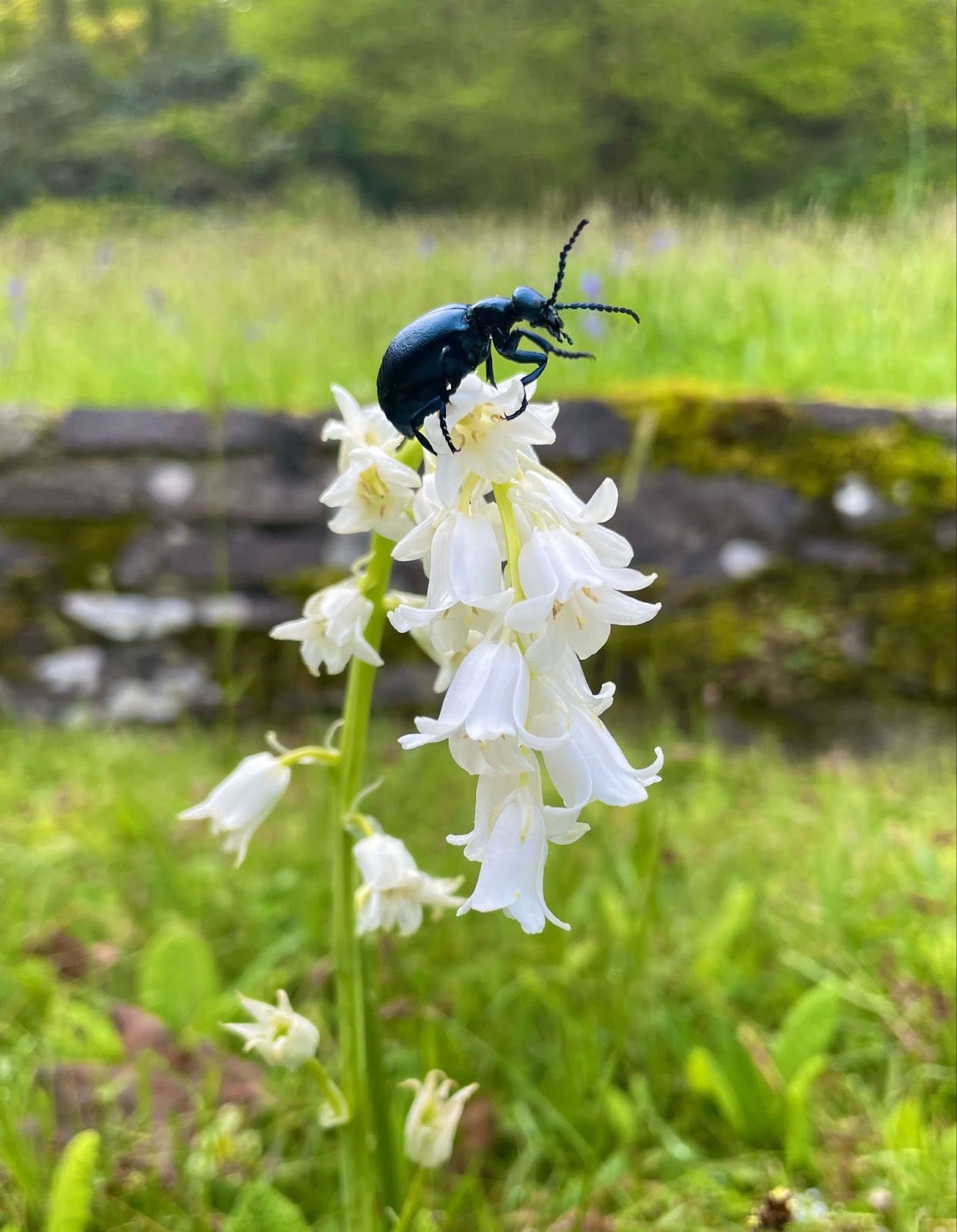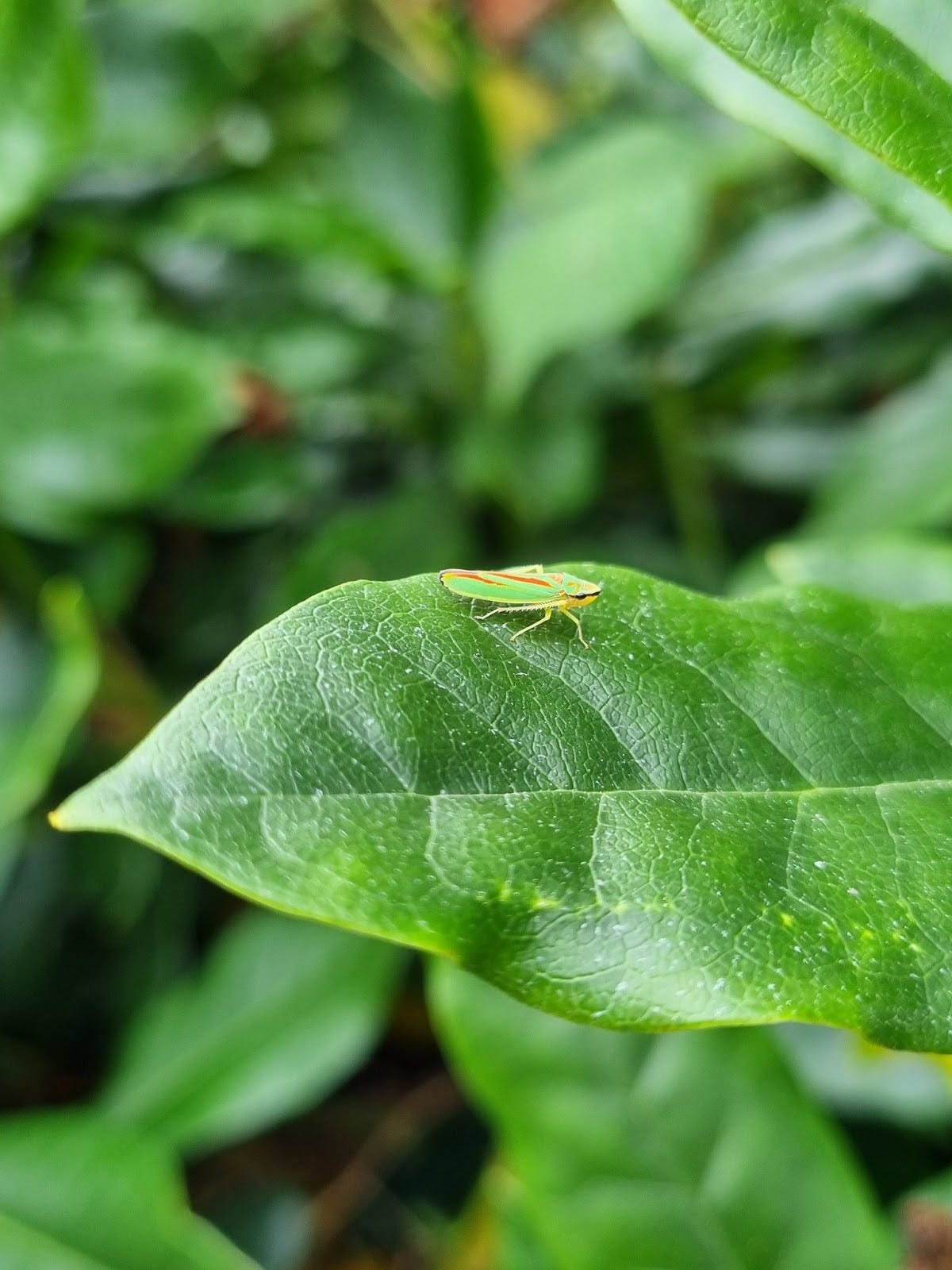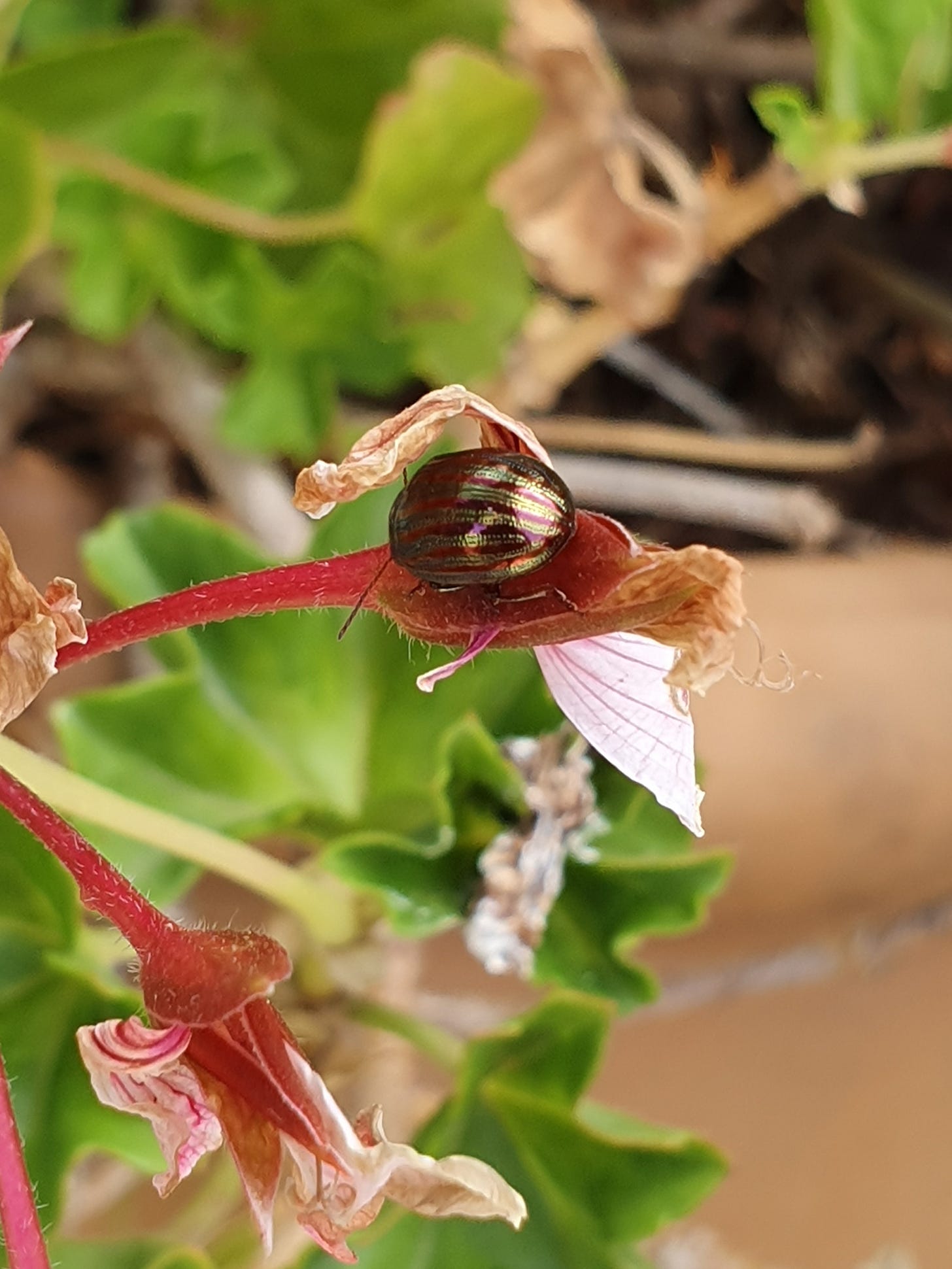Most people who get to know me quickly realise I have a thing for insects and spiders. Indeed, if you spend any amount of time with me and you’ll soon get accustomed to impromptu bug snaps, where I’m bending in often unnatural ways to get a picture of a six or eight-legged friend.
One of the great pleasures in my life is peeking into flowers and foliage to spot an interesting insect or awesome arachnid. I seem to have a knack for it too — I’ve definitely surprised my partner Jac with my affinity for spotting bugs, and I even contributed at least 20 sightings to the Buglife.org Oil Beetle Hunt!
Insects and spiders in the UK are beautiful and fascinating, and it’s often surprising just how much variety there is. This is what this post is all about — highlighting the UK’s unusual insects to show that even in the UK, which ranks among the world’s most nature-depleted countries, there’s a lot to see.
And, a lot to protect for future generations, which is why I’ve also added information at the end on what you can do to help support insects and spiders in the UK.
Crab spider
In spring, one of the first creatures I try to spot is a crab spider, and their uncanny camouflage makes this easier said than done! They have the ability to change colour to match the flower they’re hunting in, so when an unsuspecting bee or fly lands to gather pollen or nectar, the crab spider strikes.
I learnt to better find crab spiders by looking on the ground first — where you find piles of dead bees or flies, you’re likely to find a crab spider somewhere in the flowers above. It does pain me a little to see bees picked off like this, but a spider’s gotta eat!
Oil beetle
This is one of the most charismatic insects to be found in the UK, and I absolutely love them. So much so, that when Buglife.org announced a nationwide oil beetle hunt (to protect them) I submitted around 20 sightings. The purpose of this hunt was to help identify strongholds for the species, which has unfortunately been in decline over the years.
I think I was only ever supposed to submit one, but I reported oil beetle sightings from multiple locations across Cornwall and I had a lot of fun tracking them down!
Be aware that picking them up runs the risk of getting covered in an oily substance (hence the name) that can burn the skin. Like most nature, it’s best to let the oil beetle alone and doing its own thing.
Anaglyptus mysticus
These striking beetles don’t have a common name, so henceforth I’m calling them red-shell flower munchers, on account of their red shell and propensity for eating flowers of course. They’re quite rare to see, typically only found on wild flowers near the borders of forests (which themselves are increasingly rare in the UK).
Before the red-shell flower munchers adopt their bright colours, they spend between two and three years as larvae, chewing through decaying foliage from broadleaf trees such as sycamores, poplars, and English oaks.
I weirdly identify with this beetle, having once decided with a friend to coat wild primroses with icing sugar, freeze them, then eat them. My verdict: not bad, if a little unsatisfying (and definitely not filling).
Rhododendron leafhopper
Have you seen how cute this little Rhododendron leafhopper is? It was absolutely tiny and I was so happy it stopped bouncing around every millisecond to let me grab this picture.
What it lacked in size though, it definitely made up for in vibrancy, the picture doesn’t do justice to how much the green and red popped. Its leaf hopping makes sense when you realise how much the bright colours made it stick out — if I were a bird I’d spot it a mile away.
I saw a similar leafhopper on a hike through Doi Inthanon (03:02) also, though this one was far less conspicuous and I remember Jac asking me how on earth I spotted it! I guess I just got that bug 20/20 vision.
Cucumber orb spider
The cucumber orb spider looks fresh enough to use in a salad! (Please don’t though). While not particularly rare, these spiders are nonetheless tricky to spot because of how well they blend in with the leaves they hunt on.
Except for the one above of course, who I guess was taking a break from catching flies to have a sniff of the flowers? Not a huge amount to smell in wild cherry blossom mind you!
Ruby-tailed wasp
(Sven Damerow, Creative Commons license)
There is no other insect I enjoy seeing more in the UK than the ruby-tailed wasp, an elusive (if conspicuously coloured) species of parasitic cuckoo wasp found in early to mid summertime.
There’s just something so enigmatic about the bright colours and the way they dazzle in the sunlight. It’s a reminder that the UK has plenty of exotic hues to be found in its wildlife too.
You’ll find ruby-tailed wasps hunting for other, similarly sized species of wasps (usually solitary species) that they can parasitise. It’s grizzly, but what the female ruby-tailed wasp does is either eat the eggs of the host wasp, replacing them with her own, or waiting for the young of the host to reach the prepupal stage and killing them. Whatever she chooses to do, the end result is the same — the young of the ruby-tailed wasp take the food delivered by the host wasp, who is none the wiser.
I’m actually planning on having my first tattoo be of this wasp, because for me, it’s inextricably linked with exploring nature in Cornwall. Every time I get to spend a few days of summer down there, the first bug I’m seeking is always the ruby-tailed wasp. It’s become a sort of ritual over the years to try and spot one, and the times I do, I get so happy!
Unfortunately, these insects have proven frustratingly difficult to photograph, so I’m thanking Wikimedia here for the picture.
Rosemary beetle
Isn’t this beetle just a picture of radiance? Called a rosemary beetle, these shiny buttons made their way to the south of England from Europe, and have since become rather widespread.
It doesn’t make them the easiest to spot though, but if you’re determined, keep your eyes trained on aromatic plants towards the end of summer. Spoiler alert: yes you’ll find them munching the leaves on rosemary bushes, and also on the greens of lavender, sage, and thyme plants.
Don’t worry if you do find them and would rather they weren’t tucking into your herbs, because rosemary beetles cause very little noticeable damage.
How you can help insects and spiders thrive
Right now, wildlife in the UK is in a pretty bad shape, but there are steps you can take to help make it a little easier for the insects and spiders. And guess what, by following just a few of these top tips, you’ll be improving the lives of all sorts of animals too! Birds get more buggies to nom on, flowers have more pollinators, and our gardens, towns, and cities can look genuinely beautiful.
Petitioning for a ban on pesticides
Let’s start with this petition on banning pesticides and why it’s important. Pesticides in public areas are used to control so-called problematic species such as flies and mosquitos, but the reality in the UK is that these species are essential. Both are a valuable food source for birds, and mosquitos can actually be beneficial for human health (which I learned on a visit to an insect museum in Chiang Mai, Thailand).
Conversely, pesticides negatively impact human health and despite making up just 10% of the UK’s pesticides use, are the second most common route to exposure. The first is through our food, but that’s a fight for another article!
Letting your garden go wild (or at least a little wild)
The time of the well-kept garden with a buzzcut lawn is over. The time of the wild garden is here! Okay so you don’t need to completely let you garden go, but consider allowing a corner of you garden to go wild. No more mowing or weeding, genuinely wild.
Trust me, within barely a moon’s passing you’ll be smiling pretty at wild flowers blossoming in spring, and honeybees having the space to really choose what flower they want to pollinate. And not just bees, but all manner of insects will be able to call your wild corner a home.
Growing helpful plants
You can still help insects in the less-wild parts of your garden too, by choosing to grow beneficial plants. There a hundreds of wonderful flowers you can add to your garden, many of which flower from early spring until Autumn.
As a rule of thumb, native plants are best, because the pollinators will be used to them. This isn’t an absolute must though, as plenty of herbs such as lavender, oregano, and thyme all produce flowers that insects love (plus they smell fantastic).
This beautiful guide from the National Biodiversity Data Centre of Ireland features loads of pollinator-friendly plants for your garden. It includes foxgloves, one of my favourite wildflowers, but please be aware that they’re poisonous if ingested.
Also, if you do plant non-native flowering plants, try to avoid invasive species like butterfly bushes. Many insects are specialists in the types of flowers they rely upon, and invasive species can often dominate and wipe these out. Those insects then find themselves without the flowers they need to thrive.
The last thing to be aware of is that many traditional garden gardening plants (such as daffodils, tulips, and petunias) actually contain very little nectar and aren’t great for insects. They might look pretty (though I’ll always prefer wild flowers myself), but to a hungry insect they’re pretty useless!
Give weeds a chance
What is it with our hatred for weeds? Dandelions, bindweeds, herb roberts, and docks are all looked upon with scorn by many gardeners. But they’re lifelines for insects tired of flying past the ornamental flowers chosen for aesthetics alone. Sure, you might argue they make your garden messy or even ugly, but try to imagine a garden without bees, ladybirds, hoverflies, or butterflies — that sounds much uglier to me.
Also, if you’re creative you’ll find many so-called weeds have fascinating uses. Docks, for example, are a natural remedy to the stings of nettles, and herb roberts are packed full of antibiotic, antiviral, and antioxidant goodness.
Next time you go to uproot a weed, maybe spare a thought for the humble bumblebee!










